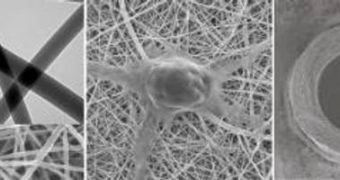In addition to making for delicious meals, crustaceans have also provided researchers at the University of Washington with the inspiration they needed to create a mix of natural and synthetic materials, to be used for biomedical applications. By combining chitosan (one of the chemicals in crustaceans' shells, which give them strength) with polyester, the UW team obtained a new type of substance that they believe could successfully be used to create the tiny tubes that support repair of a severed nerve, during recovery. Additionally, they argue that a number of other research fields could benefit from the find.
“A nerve guide requires very strict conditions. It needs to be biocompatible, stable in solution, resistant to collapse and also pliable, so that surgeons can suture it to the nerve. This turns out to be very difficult,” UW Professor of Material Science and Engineering Miqin Zhang explains about the challenges nerve repairs pose. He is also the lead author of a new paper giving details on the innovative material, published in the latest online issue of the scientific journal Advanced Materials.
When nerves such as those in the fingers or wrists become separated following an accident, they need to be joined back together. However, that has proven to be very difficult. When doctors first discovered how to perform this type of procedure, they simply connected the nerves back to each other, as they noticed that the pathways continued to grow even after separation. For larger gaps, or for when pieces of nerves were missing, they used nerve grafts. But that practice has since been abandoned, and most surgeons now use the tiny tubes known as nerve guides, to help the fragments grow into each other.
Current nerve guides are made from the structural protein collagen, which is very elastic, but fares poorly in the wet environment of the human body. Additionally, it does not come cheap, and it can also trigger immune system responses. The UW experts say that the conduits need to have more strength, in order to ensure a healthy nerve growth. “This conduit serves as a guide to protect the neuron from injury. If the tube is made of collagen, it's difficult to keep the conduit open because any stress and it's going to collapse,” Zhang adds.

 14 DAY TRIAL //
14 DAY TRIAL //